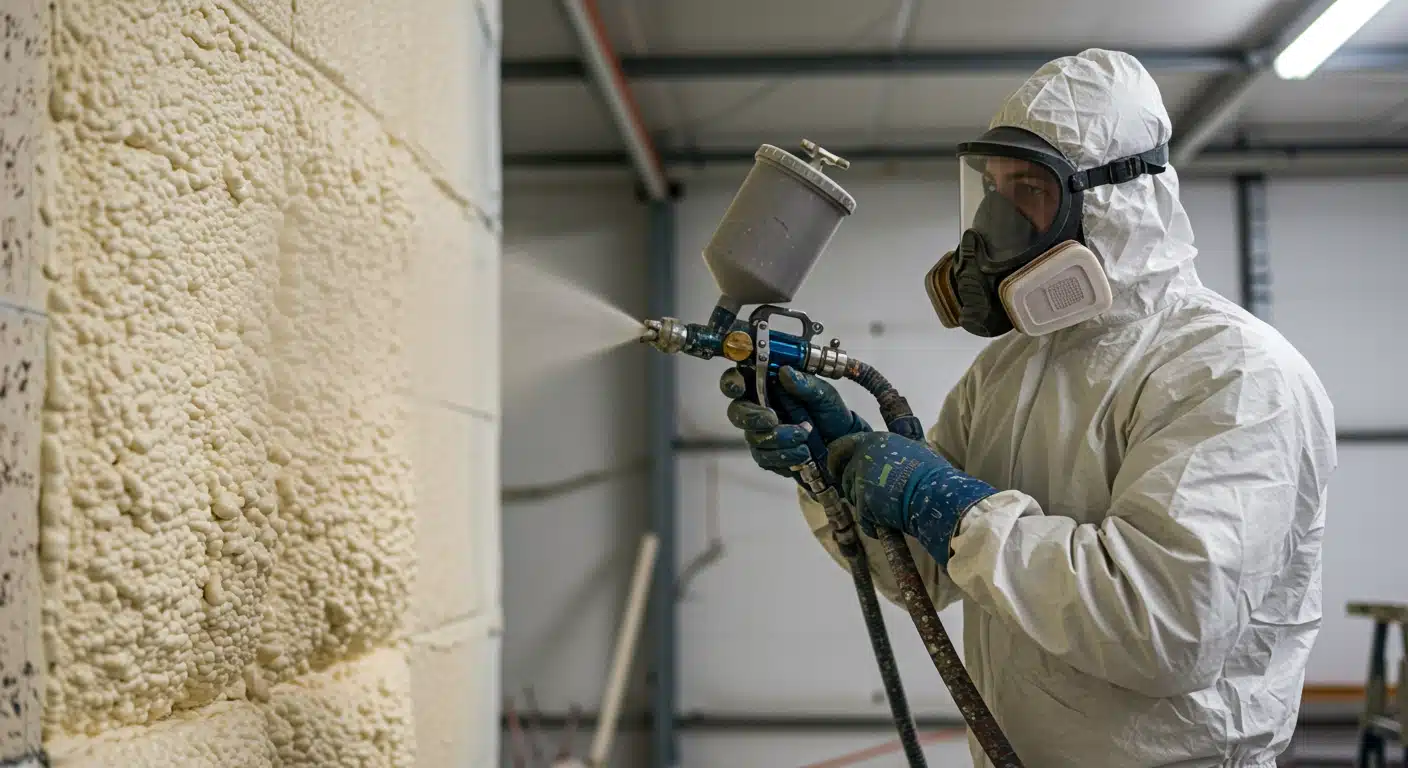At prestige insulation solutions, we understand how critical thermal barrier coatings (TBCs) are to the performance and protection of insulated systems. Whether applied to commercial roofing, industrial machinery, or HVAC components, TBCs are your first line of defense against heat degradation, energy loss, and system wear. But performance isn’t permanent it requires attention. In this guide, we explain how to keep your coatings effective, your systems efficient, and your investment protected.
Why Long-Term TBC Care Matters
Thermal barrier coatings do more than resist heat. They slow down material fatigue, reduce energy loss, and extend the lifespan of entire systems. But like any material exposed to heat, moisture, and wear, they break down over time. Regular maintenance isn’t optional it’s how you ensure the coating does what it’s supposed to do: protect.
When we install TBC systems, our job doesn’t end there. We guide our clients on how to maintain them. That means routine inspection, condition assessment, and knowing the signs that tell you it’s time to act.
Common Signs Your TBC Needs Attention
Cracking, flaking, fading, or a noticeable drop in thermal performance these are early indicators. Some issues develop gradually, like discoloration or small areas of thinning. Others, like blistering or delamination, can develop quickly and jeopardize the entire system.
In one recent commercial project, a client noticed increased energy use in one zone of their facility. Our inspection revealed spot delamination in a high-traffic area, caused by repeated mechanical stress. We applied a patch repair and restored full function, avoiding a full-system overhaul.
Surface Cracks and What They Mean
Hairline cracks don’t always signal failure, but they are an early warning. We advise clients to document them, monitor growth, and schedule a closer inspection if they expand or deepen. Left alone, cracks allow moisture intrusion, leading to rust and eventual material breakdown.
Uneven Texture or Blistering
Blisters form when gas gets trapped beneath the coating, often caused by high substrate temperatures or poor adhesion. These bubbles eventually rupture, leaving the system vulnerable. Our team is trained to spot these defects during infrared scans and physical inspections, long before they become visible.
Inspection Intervals That Protect Your Investment
We recommend scheduling TBC inspections every 6 to 12 months depending on exposure, usage, and system type. For clients in coastal regions, exposed to high humidity and salt, we often suggest quarterly reviews.
Routine inspections are not just a box to check. They provide benchmarks. If you inspect once a year, you’ll miss slow changes that happen in between. By inspecting more frequently, you’ll spot patterns and act before the damage spreads.
What Our TBC Inspections Cover
Every TBC inspection we perform includes a detailed surface scan, adhesion check, and thermal imaging review. We look for hidden defects, track changes in coating thickness, and assess how effectively the coating is still blocking heat transfer.
Documentation That Makes Maintenance Predictable
We document every finding in a digital report, including photos, infrared data, and measured values. That gives our clients clear data, not guesses, when deciding whether to recoat, patch, or leave it alone.
Maintenance Options: Repair, Patch, or Recoat?
No two coatings fail in the same way. Sometimes the damage is superficial. Sometimes it’s systemic. Our technicians help clients choose the right option based on the coating type, age, and underlying material condition.
Spot Repairs for Isolated Issues
When one area fails but the rest is intact, a local patch is often the best option. We feather the edges, remove any compromised material, and reapply the same TBC system for a seamless match.
Full Recoat vs. Targeted Overlay
If 30% or more of the surface is showing wear, a full recoat may be more cost-effective than repeated patches. In some cases, we apply a high-bond overlay coating with added reflectivity for energy savings. That’s especially helpful in facilities aiming for LEED compliance or energy certification.
What Homeowners and Facility Managers Can Do Between Service Visits
There’s plenty you can do between our visits. We advise clients to visually inspect surfaces once a month, especially around vents, seams, and high-traffic zones. Look for discoloration, moisture streaks, or changes in surface temperature.
A handheld IR thermometer is a great tool for basic monitoring. If a previously cool surface starts to show increased readings, call us. It might be nothing or it might be the start of coating degradation.
Early Alerts That Save Money
We had a case where a building manager flagged a 5-degree temperature rise near a duct elbow. A fast inspection revealed a 3-inch delaminated patch. We repaired it in under an hour, avoiding what would have turned into a $2,500 energy cost spike over the next year.
Real-World Results: What Maintenance Achieves
Consistent TBC care cuts energy loss by 10–20%, reduces HVAC strain, and adds years to the lifespan of roofing and mechanical systems. One client, a regional logistics center, reduced their quarterly energy spend by over $4,000 just by committing to biannual TBC inspections.
Another client, a small manufacturing facility, had us transition them from a basic ceramic coating to a dual-layer high-temperature TBC. With maintenance, that system has now lasted seven years without reapplication.
Lower Costs, Longer Life
It’s simple: a well-maintained coating performs better and lasts longer. Repairs are faster and cheaper than replacements. And your energy bills reflect the difference.
Reliable Performance Through Every Season
Whether you’re dealing with summer heat, winter cold, or heavy rainfall, maintained coatings deliver consistent results. They don’t break down when you need them most.
Ready to Extend the Life of Your System?
Thermal barrier coatings protect your property but only if they’re maintained. Whether you’re managing a commercial facility, an industrial site, or a residential building, the principles are the same: inspect regularly, address issues early, and partner with experts.
At prestige insulation solutions, we help clients stay ahead of failure, minimize cost, and maximize performance. If you’re ready to protect your investment and lower your energy spend, we’re here to help.
Call us today at (850) 429-4969 or email [email protected] to schedule your inspection.
Have More Questions? We’ve Got Answers
How long do thermal barrier coatings last with regular maintenance?
With proper maintenance and ideal conditions, TBCs can last 5–10 years or longer. Regular inspections and timely repairs extend their lifespan significantly.
What is the first sign of thermal coating failure?
Hairline cracking or subtle color change is often the earliest visible sign. Surface temperature increases are another warning sign.
Can I inspect my TBC myself?
You can and should do visual checks monthly. Look for cracks, discoloration, or water stains. For full evaluations, thermal scans, and adhesion testing, call us.
How much does a typical inspection cost?
It depends on the system size and access. Basic inspections start affordably. Reach out to us at (850) 429-4969 or [email protected] for a quote.
What are the risks of ignoring TBC maintenance?
Ignoring maintenance can lead to coating failure, moisture damage, structural fatigue, and energy loss — all of which cost more to fix than prevent.
Does climate affect how often I should inspect?
Yes. Hot, humid, and coastal climates accelerate coating wear. In Florida, we recommend quarterly checks.
How do I know if a patch or full recoat is better?
If under 30% of the coating is affected, a patch may work. More than that, a full recoat often saves money long term. We help clients assess the best option.
What tools do professionals use to inspect TBCs?
We use infrared cameras, thickness gauges, adhesion testers, and moisture meters. Our trained techs interpret results and recommend next steps.
Can thermal coatings help me meet energy codes?
Yes. Reflective and high-efficiency coatings contribute to energy compliance and often support LEED or similar certifications.
How do I schedule a professional TBC inspection?
Contact prestige insulation solutions at (850) 429-4969 or email us at [email protected]. We’ll schedule a time that works for you.



